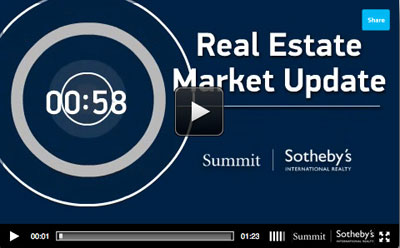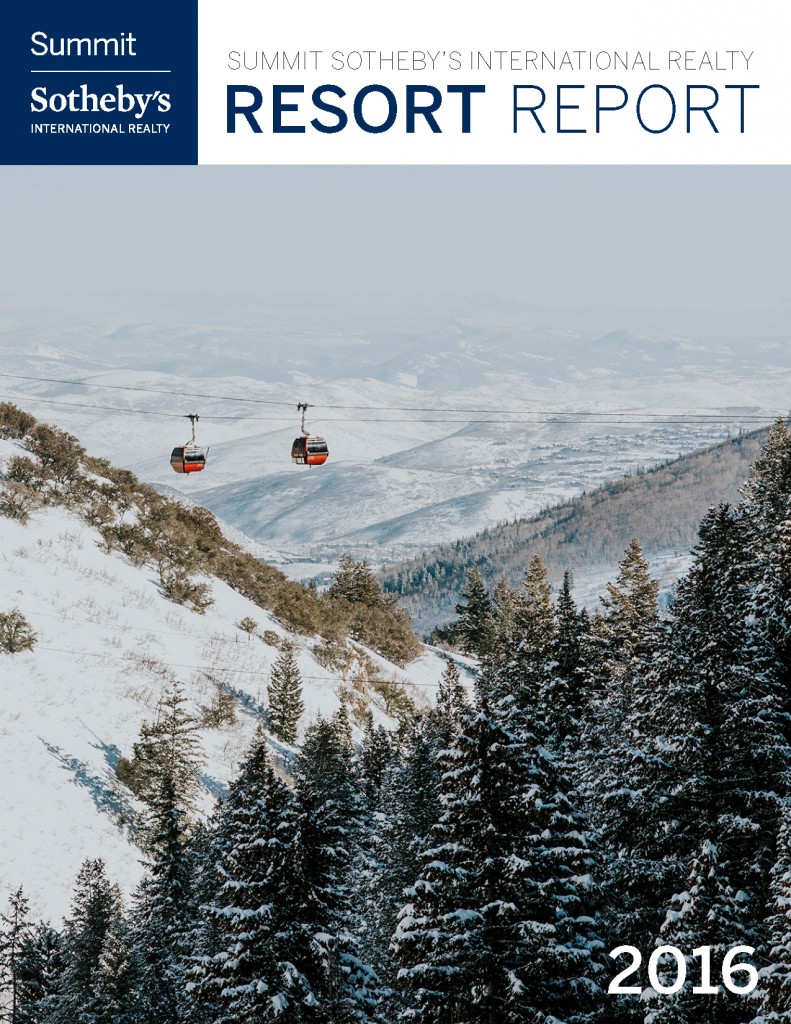Nearly a decade has passed since the housing market crash implanted longstanding nightmares in the minds of realtors and homebuyers everywhere. Across the country, scars from the crash still remain—in the confidence of those wanting to sell their homes, in millennial and first-time homebuyers, and even in unemployment rates in those areas of the country hardest hit.
In Utah, with its strong economy, low unemployment, high (and young) marriage rate, and increase in population—the state’s population hit 3 million in 2016 and is ranked as the fastest-growing state in the nation by the U.S. Census Bureau—the housing market has thawed from its freeze in 2007-08. In fact, it’s done more than thaw: With inventory at historic lows and homes flying off the market, Utah’s residential real estate market is practically reaching a boiling point.
Heating up
Across Utah, the residential real estate market is enjoying great success. Mortgage loan company Freddie Mac ranked Utah as one of the strongest housing markets in the nation, due to the strong economy in the state. For major metropolitan markets, Ogden was ranked No. 3, Provo No. 5 and Salt Lake City No. 6 in its Multi-Indicator Market Index, which shows the improvement of housing markets across the country.
“We’re having a great year,” says Chris Nichols, president of the Utah Association of Realtors. “At the end of the third quarter, our sales were up 2 percent over 2015, when you compare them to each other over a rolling 12 months. 2015 was a record year, and 2016 should break that record.”
“We’re performing as good or better than any other market in the state right now,” echoes Vardell Curtis, chief executive officer of the Washington County Board of Realtors. “That’s a good indication of our recovery from what happened in 2008-09, 2010-11. There were five to six years of horrible market conditions. Currently in the market right now, we’re are 100 percent fully recovered and starting to see home values appreciate in value.”
Curtis laughs as he points to an “unscientific” marker to partly explain how well the market has been fairing in the past few years. His organization has a base of dues-paying members, he says, like a chamber of commerce. In 2005, at the peak of the market, he says his membership in Washington County exceeded 1,600 members—which, while small potatoes in contrast to the seven or 8,000 members on the Salt Lake City board, was still a high for the region. In 2008, the number of members went into a freefall. Curtis lost nearly 800 agents. As the market began to heal, so did the members’ numbers—now, he says, the number is back up over 1,100.
“Very unscientific,” he laughs, “but it’s an indicator of confidence and how resilient the market is right now.”
While Curtis’ methods may be unscientific, they’re similar to what others in the industry are seeing in their own practices. Marisa Bentley, a realtor at Berkshire Hathaway Home Services, says a big facet of her business in the past decade has been dealing with bank-owned or foreclosed properties—investment properties, she says, that people simply walked away from.
“It was huge in 2009,” says Bentley. “Every year it’s getting smaller, and I can gauge the success of the industry based on the percentage it is of my business.”
Analytical data backs up the observed changes, too. Analytics and business intelligence company CoreLogic reported that Utah foreclosures are down 28 percent from last year and the Utah foreclosure rate is less than .5 percent—one of the lowest foreclosure rates in the country.
Homes, says Nichols, are selling like hotcakes. “How long it takes to sell a home is down significantly. It used to take 51 days and now it takes 44 days, on average, to sell a home. That’s across the state—it’s a state average. If you look at Salt Lake City, the average is 31 to go under contract. Many homes are going under contract within the first day or even hours,” he says.
The most competitive market is for homes priced under $500,000. Buyers looking for homes in the $500,000-750,000 range have “more room,” Nichols says, and the market for over $1 million is slower still—but the time it takes to sell a house is still significantly shorter than it was before.
Low rates, low inventory
With mortgage rates still low and the population rising, a strange sort of conundrum has arisen in the state. While homebuyers scurry to snatch up homes that may be on the market for mere days, sellers hem and haw about whether they should sell. According to Nichols, the average tenure in a home was seven years before the recession. Now that number has stretched to nine and a half years. It’s not a question of sellers getting their asking price: Nichols says that in 2016, sellers were averaging 97 percent of their asking prices. Home values, too, have improved since the recession. But still, across the board, the number of homes for sale has fallen 22 percent from last year—that’s approximately 3,900 fewer homes from 2015.
“If realtors didn’t list any additional properties, it would take us 3.2 months to sell through those homes. At that rate, it’s one of the most competitive markets we’ve seen for buyers,” says Nichols. “A balanced market is six months of inventory, so we’re three months below what we considered a balanced market.”
Why is the inventory so low? Part of it has to do with those remaining scars from the market crash, says Bentley. Many would-be sellers look around the real estate market and know they could sell their house for their asking price—but those same sellers are less confident they could turn around and buy something else with those gains.
“Never in recorded history have we run into a situation where our inventory is this low,” says Bentley. “Because rates are low, because we’ve got these home prices that are still somewhat reasonable, and because of the cycle of rates going up … you’ve still got buyers who are ready to jump in. When you have a lot of buyers and you have sellers saying, ‘If I were to sell, where would I go? What would I buy?’ then people hold back their inventory, unless they have a mitigating factor that makes them sell. Our prices tend to increase, and with the threat of interest rates rising, buyers are spurred on to continue to look for homes because they want to get in while rates are still good.”
The rates won’t be this good for buyers forever, which feeds into the desire for people to buy homes while they’re still low. Bentley says rates have been held artificially low for so long that buyers have gotten too used to them and feel pressure when they see them rise.
“When I purchased my first home, our interest rate was at about 6.5 percent. I was thrilled … Nowadays, people would say that’s asinine,” she says. “When our parents purchased homes, they were looking at 10, 12, 14 percent interest rates. You look at what that would do to affordability! When my buyers are frustrated with rates where they are, because they’ve gone up a quarter or half percent since when they started looking, it does mean that they do need to jump in now.”
“If the health of the country is good, interest rates will start to go up. Homebuyers will see that they need to make a decision now,” agrees Curtis. “’It’s going to cost me more, I better make a decision.’ So I think, as bad as it sounds, interest rates going up will be a real stimulus.”
Affordability concerns
It’s basic economics: the crunch on inventory has driven up home prices. Nichols says during the prior housing cycle, the median home value peak was about $200,000 prior to the recession. Currently, that number has grown to $249,000, which is up $20,000 compared to last year. And while he says affordability hasn’t become a huge concern for the industry yet, it is something to keep an eye on.
“An average Utah family with the median household income, they have 129 percent of the income for a median-priced home. That’s good. However, it’s down from 135 percent from last year,” says Nichols. “While affordability is still OK, it has come down 6 percent, which concerns us a little bit. Home sales would increase if there was inventory and buyers had more options.”
The National Association of Realtors is projecting an increase in home construction, which Nichols says will help the market stabilize. In Washington County, Curtis says construction, which all but disappeared from Southern Utah during the recession, has made a comeback.
“[Home construction] is almost exactly where it was 10 years ago. It was a tough ride. Construction took a big hit, but everything that I can see right now suggests to me that the only thing holding construction back right now is the trades—the plumbers, the roofers, etc. It raises the price. The ones that are here can charge more for their services,” says Curtis. “But construction is very healthy and is only going to get stronger.”
Inventory and affordability concerns are prompting some companies to take action by considering what non-traditional construction developments they could offer first-time buyers. Recently, real estate analytics company Trulia released data showing that almost 40 percent of young adults nationwide continued to live with their parents or other relatives last year, a percentage that rates as a 75-year high in this country. CodeLogic ranks Utah as the No. 1 state for millennial homebuyers, but companies like Oakwood Homes want to ensure that the demographic most likely to be influenced by higher rates and low inventory will continue to have options to buy in a seller’s market.
A common solution for many looking for a home in the hot Utah market has been to simply “drive until they can buy,” says Michelle Byrge, director of marketing at Oakwood Homes. “But what if you could stay closer to where you work? What if you could stay in the area you want to stay in, and not spend $310-330,000?”
Oakwood Homes’ solution is to build shared-driveway detached townhomes in a courtyard setting. The homes are closer together, but with carefully-planned details to keep the feeling of privacy alive: for instance, making sure that none of the windows have sightlines directly into each other’s homes. The homes all have what Byrge calls “wow features,” such as islands, open floor plans, flex spaces and bonus rooms.
“This buyer is an active buyer, so it’s low-maintenance living. It’s single-family living with low-maintenance. The front yards are taken care of, and the back yards have livable space but aren’t high maintenance,” she says. “They can enjoy their weekends, the outdoors, and not have to put the time in for maintenance. They want home ownership.”
Oakwood Homes has debuted one such community in American Fork, called South Point. The company is going to start offering these floorplans in multiple counties throughout 2017, says Byrge. She says the company is confident and encouraged by the response so far to their communities.
“It’s such an exciting time in housing in the Salt Lake City market,” she says. “The economics of the entire city is so strong. You have a young median age with a strong median income. It’s so exciting to be here right now.”




